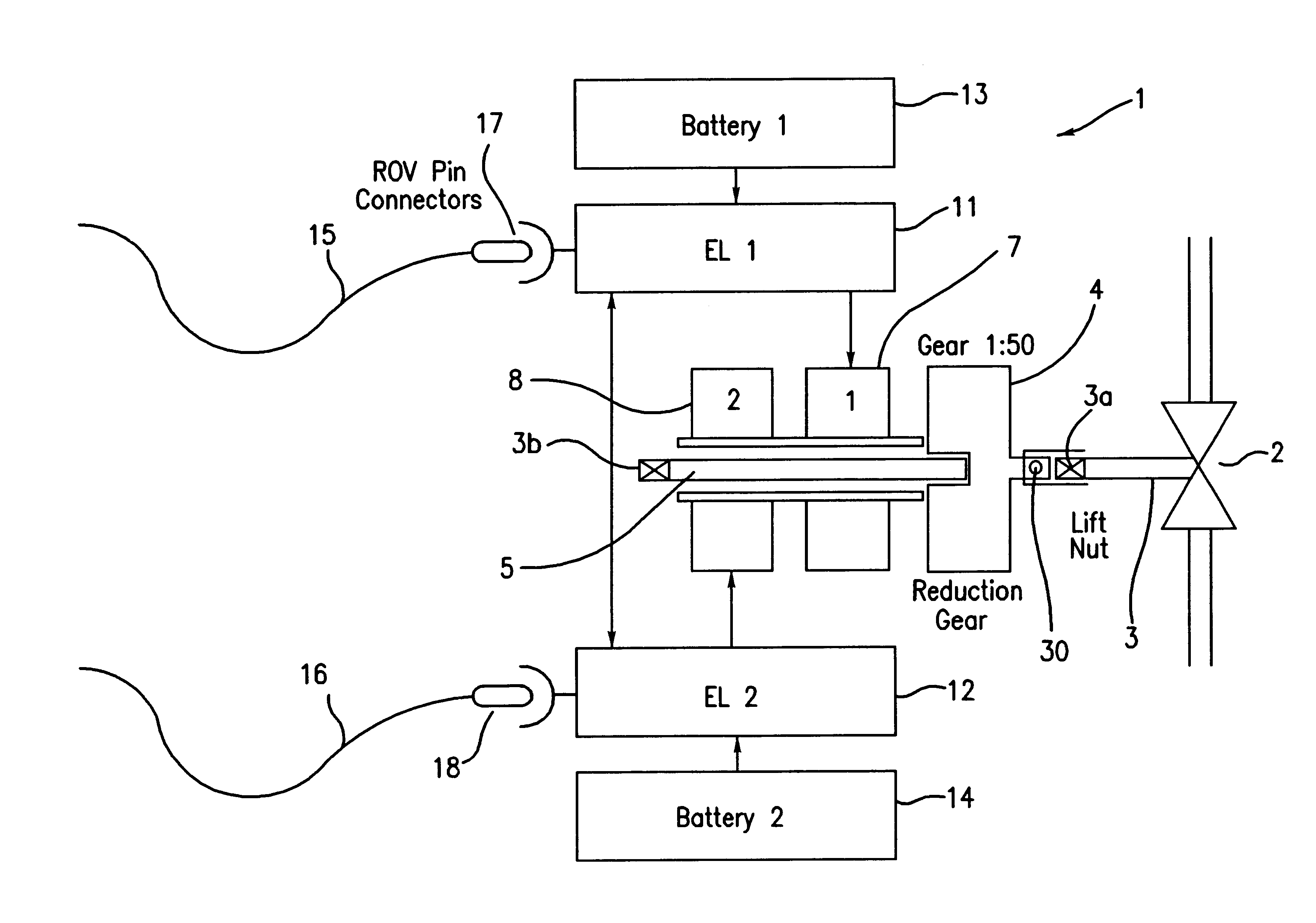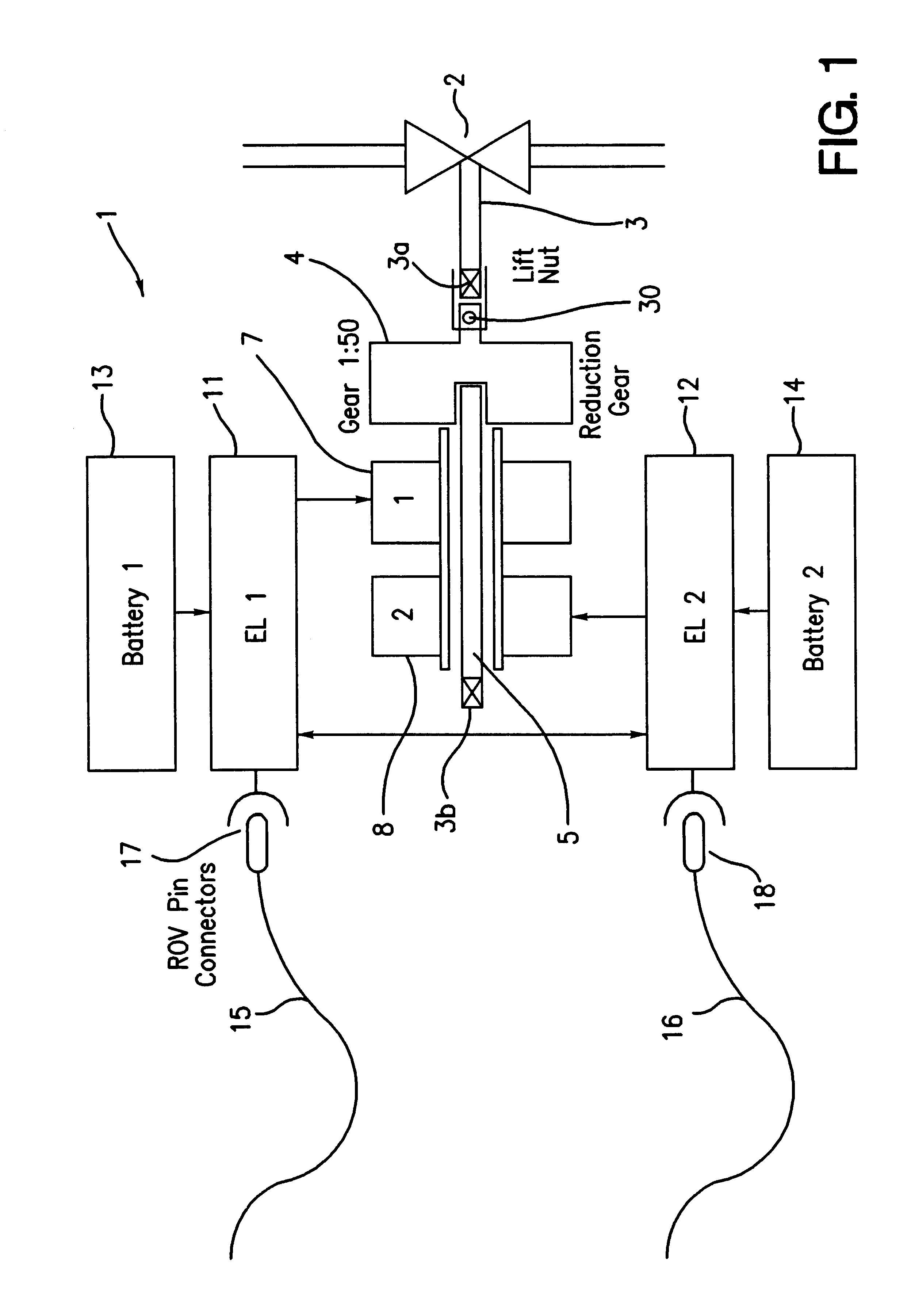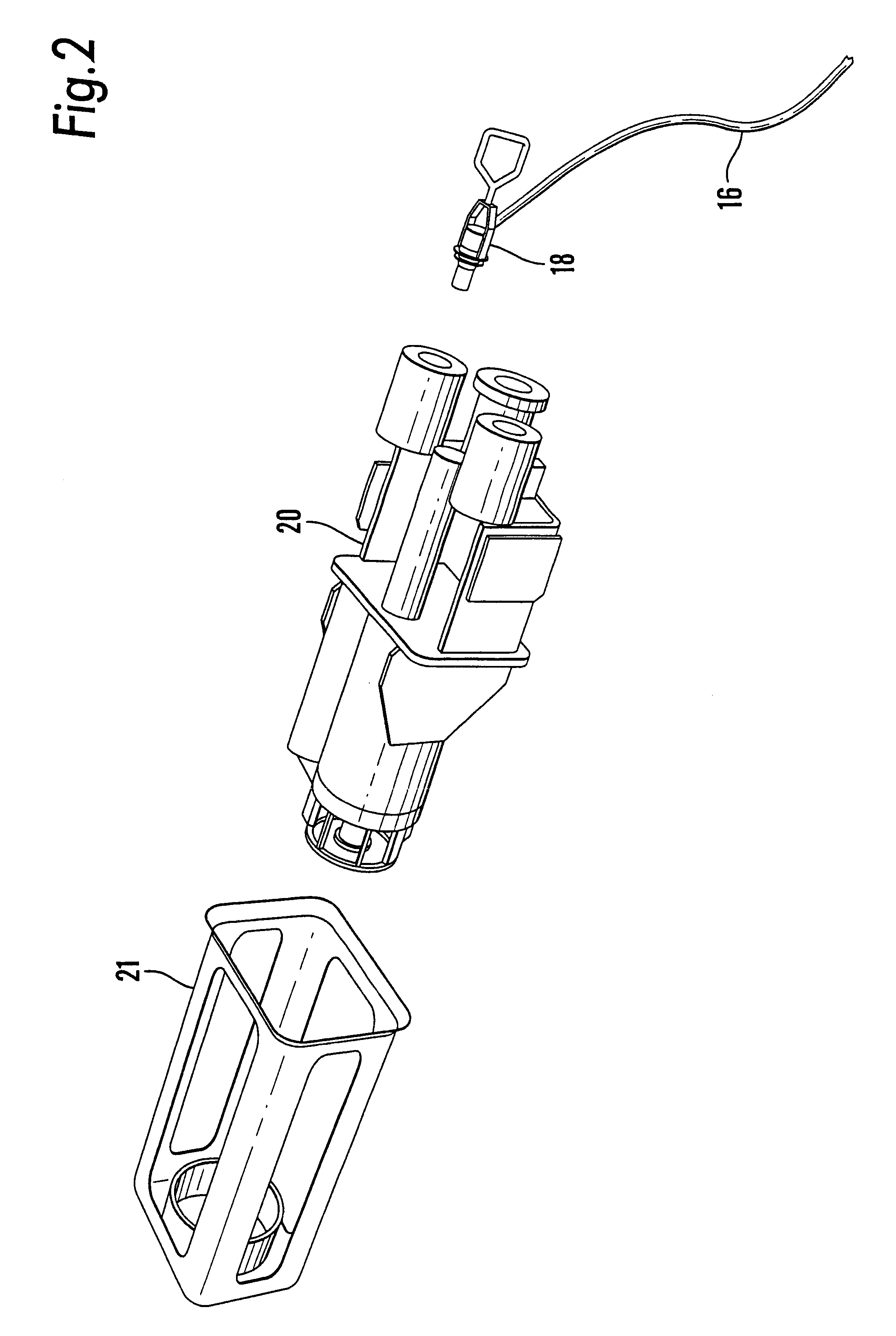Electric actuator
a technology of electric actuators and actuators, which is applied in the direction of valve details, valve arrangements, borehole/well accessories, etc., can solve the problems of actuators not being used in some subsea applications, fluid can lose pressure, and the cost of such activities gets larger
- Summary
- Abstract
- Description
- Claims
- Application Information
AI Technical Summary
Benefits of technology
Problems solved by technology
Method used
Image
Examples
Embodiment Construction
Referring firstly to FIG. 1, a valve 2 is operated by an electric actuator 1. The valve may as an example be a conventional gate valve with a valve spindle 3. The valve spindle 3 is at one end equipped with a coupling 3a. The end coupling may include a rotary to linear converter, when the valve is a sliding type valve. The end coupling is designed with an interface allowing it to be rotated by a standard tool of a remotely operated underwater vehicle (ROV), usually referred to as a manual override. This allows the valve to be operated even if the gearbox and motor has been decoupled from the valve spindle. The output shaft 30 of a reduction gear 4 has a corresponding interface.
Into the gear input side is a drive shaft 5 that is the output shaft of an electric motor 7, 8. The driveshaft 5 runs through the motor and has at its end 3b an interface, similar to the above, allowing manual override of the valve by using an ROV. The output shaft of the reduction gear may comprise a momentum...
PUM
 Login to View More
Login to View More Abstract
Description
Claims
Application Information
 Login to View More
Login to View More - R&D
- Intellectual Property
- Life Sciences
- Materials
- Tech Scout
- Unparalleled Data Quality
- Higher Quality Content
- 60% Fewer Hallucinations
Browse by: Latest US Patents, China's latest patents, Technical Efficacy Thesaurus, Application Domain, Technology Topic, Popular Technical Reports.
© 2025 PatSnap. All rights reserved.Legal|Privacy policy|Modern Slavery Act Transparency Statement|Sitemap|About US| Contact US: help@patsnap.com



